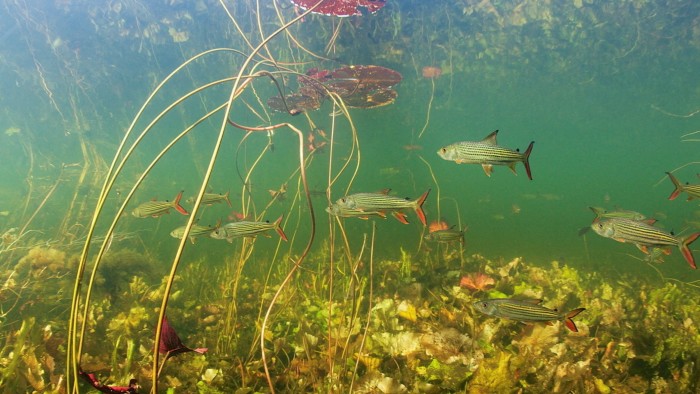Stay informed with free updates
Simply sign up to the Sustainability myFT Digest — delivered directly to your inbox.
Almost a quarter of main freshwater animal species including fish, shrimps and crabs are threatened with extinction, worldwide research involving more than a thousand experts has found.
The creatures in highly diverse ecosystems that help prevent flooding, mitigate climate change and recycle vital nutrients are suffering from human activities including pollution, dams and shifts in agricultural land use.
The study examined more than 23,000 animals on the International Union for Conservation of Nature (IUCN) “red list” of threatened species, which was published in the Nature journal. It uses public data sources and about two decades of work by the scientists, including taxonomists and those working directly with species in their environments.
About 24 per cent of the species studied were at high risk of extinction, meaning that they were critically endangered, endangered, vulnerable or already thought to be extinct in the wild, the researchers said.
The number could be even larger because of a lack of information to determine the level of threat. This meant the threat estimate ranged from 18 per cent to as high as 42 per cent for fishes, odonates — dragonflies and damselflies — and decapods, such as shrimp and crab, while about 23 per cent of tetrapods including frogs and reptiles were at risk.
Freshwater animals were often overlooked in the focus on more “charismatic” mammals and birds, but played crucial environmental, financial and cultural roles, said Catherine Sayer, co-ordinator of the research and freshwater biodiversity lead at IUCN.
“Freshwaters are biodiversity hotspots because they support so many species,” she said. “They are important in themselves, they’re important in terms of the value that they’re bringing to a healthy planet and important in terms of the value that they’re providing economically.”
One example of the consequences of extinction might be that the loss of a predator allows herbivorous prey to flourish and ravage freshwater plants, raising the risk of flooding, Sayer said.
While over-harvesting has caused most freshwater animal extinctions since 1500, the report identifies agriculture and pollution, mainly from farming practices, as main threats today.
About 54 per cent of the threatened fishes, decapods and odonates were affected by pollution, 39 per cent by dams and water extraction, 37 per cent by agricultural land use changes and associated effects, and 28 per cent by invasive species and disease, the research said.
About 35 per cent of wetlands, such as marshes, swamps and pools, was lost between 1970 and 2015, a rate three times faster than forests, it found.
Over the past 50 years, the rate of loss of freshwater species had consistently outpaced marine and terrestrial declines, Nicole Silk, global director of freshwater outcomes for The Nature Conservancy group said.
She noted the “good news” was that freshwater systems could recover quickly through targeted efforts. “Water is increasingly taking centre stage in our global dialogues and conventions. Starting just two years ago, inland waters are now a central focus along with oceans and land for our efforts to reduce biodiversity loss.”
In its landmark report last month, the Intergovernmental Science-Policy Platform on Biodiversity and Ecosystem Services (IPBES) said the failure of sectors such as agriculture and energy to account for their environmental damage was costing the global economy up to $25tn a year, or a quarter of global GDP.
Biodiversity is declining at a rate of between 2 and 6 per cent per decade, weakening ecosystems that underpin food security and climate resilience, according to the IPBES scientists.
Talks to agree on a global funding strategy, which collapsed at a UN biodiversity summit in Cali, Colombia, in October when too few participants remained to finalise decisions, are set to resume in Rome in February.
Read the full article here

